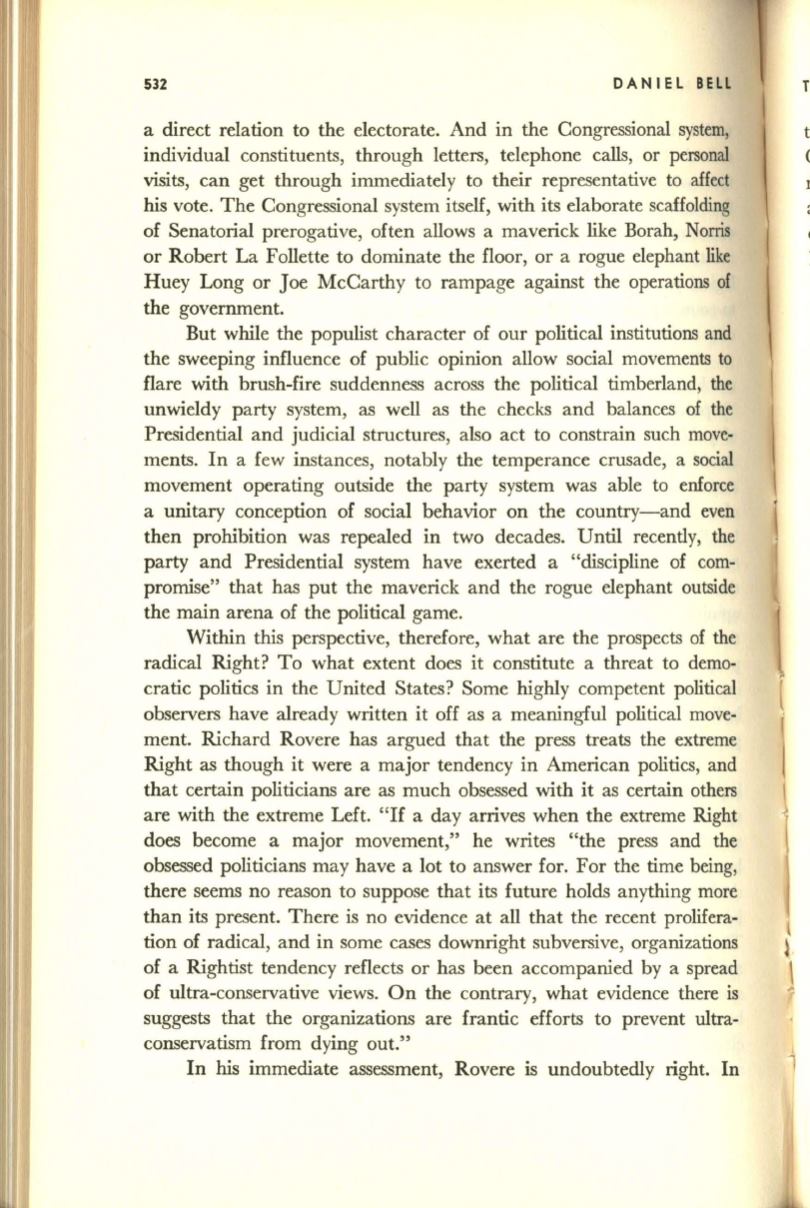
532
DANIEL
BELL
a direct relation to the electorate. And in the Congressional system,
individual constituents, through letters, telephone calls, or personal
visits, can get through immediately to their representative to affect
his vote. The Congressional system itself, with its elaborate scaffolding
of Senatorial prerogative, often allows a maverick like Borah, Norris
or Robert La Follette to dominate the floor, or a rogue elephant like
Huey Long or Joe McCarthy to rampage against the operations of
the government.
But while the populist character of our political institutions and
the sweeping influence of public opinion allow social movements to
flare with brush-fire suddenness across the political timberland, the
unwieldy party system, as well as the checks and balances of the
Presidential and judicial structures, also act to constrain such move–
ments. In a few instances, notably the temperance crusade, a social
movement operating outside the party system was able to enforce
a unitary conception of social behavior on the country-and even
then prohibition was repealed in two decades. Until recently, the
party and Presidential system have exerted a "discipline of com–
promise" that has put the maverick and the rogue elephant outside
the main arena of the political game.
Within this perspective, therefore, what are the prospects of the
radical Right? To what extent does it constitute a threat to demo–
cratic politics in the United States? Some highly competent political
observers have already written it off as a meaningful political move–
ment. Richard Rovere has argued that the press treats the extreme
Right as though it were a major tendency in American politics, and
that certain politicians are as much obsessed with it as certain others
are with the extreme Left.
"If
a day arrives when the extreme Right
does become a major movement," he writes "the press and the
obsessed politicians may have a lot to answer for. For the time being,
there seems no reason to suppose that its future holds anything more
than its present. There is no evidence at all that the recent prolifera-
tion of radical, and in some cases downright subversive, organizations
~
of a Rightist tendency reflects or has been accompanied by a spread
1
of ultra-conservative views. On the contrary, what evidence there
is
suggests that the organizations are frantic efforts to prevent ultra–
conservatism from dying out."
In his immediate assessment, Rovere is undoubtedly right. In
1


